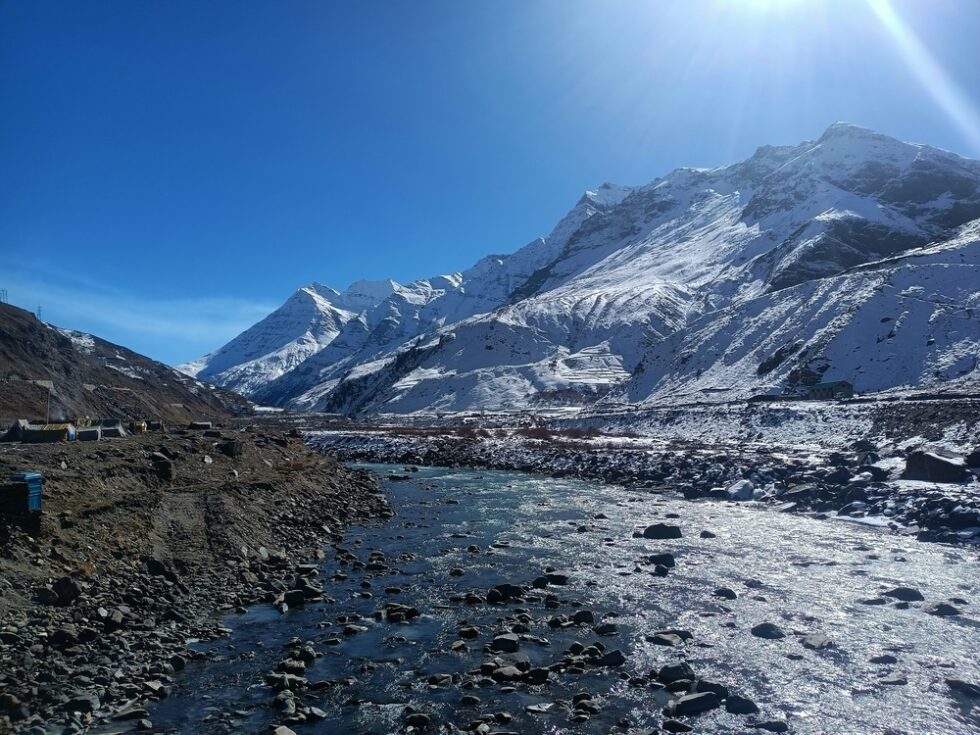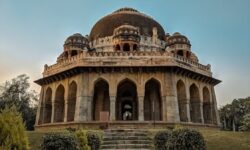
Introduction: The Call of the Himalayas
Trekking in Uttarakhand isn’t just a physical journey—it’s an invitation into a different world. One where pine-scented air greets you at sunrise, and ancient trails unfold across raw mountain passes, deep river valleys, and ridgelines that don’t show up on regular maps. Set in the lap of the Indian Himalayas, Uttarakhand offers trails that range from gentle to grueling, yet all connect to something deeper—nature in its purest form.
Unlike popular tourist circuits, trekking here isn’t about ticking off checklists. It’s about slowing down, listening to the wind rush through deodar forests, and reaching places where Wi-Fi signals vanish but clarity finds you.
Why Trekking in Uttarakhand Feels Different
The terrain here doesn’t repeat itself. From glacial routes to alpine meadows, from ancient pilgrim trails to lesser-known high-altitude lakes, trekking in Uttarakhand is layered with geological and cultural depth.
Each trail holds its own narrative:
- Snow-laden routes like Kedarkantha and Brahmatal
- Spiritual paths like the trek to Gaumukh (source of the Ganges)
- Hidden meadows like Dayara Bugyal and Auli
- Challenging ascents like Nanda Devi Base Camp
Even the local guides treat these paths with reverence—not as a workplace, but as part of their lives. Here, trekking isn’t an activity. It’s a tradition.
Best Time for Trekking in Uttarakhand
Timing matters. The right season can make the same trail feel like an entirely different experience.
- Spring (March to May): Rhododendron blooms, stable weather, melting snow trails.
- Summer (June): Great for high-altitude treks like Roopkund and Kuari Pass.
- Monsoon (July to September): Ideal only for specific trails like the Valley of Flowers.
- Autumn (October to November): Crisp air, dry paths, golden landscapes—one of the most rewarding times.
- Winter (December to February): Great for short snow treks like Kedarkantha and Chopta–Tungnath.
Each season gives a new face to trekking in Uttarakhand, making repeat visits not just common, but often necessary for those who want the full picture.
Popular Trails That Define Trekking in Uttarakhand
1. Kedarkantha Trek
Located in Govind Wildlife Sanctuary, this 6-day trek is known for snow-covered pine forests, frozen lakes, and a summit offering 360-degree views of Himalayan peaks. Great for beginners looking to test their endurance.
2. Roopkund Trek
This one’s for those who crave mystery. The trek ends at a glacial lake filled with ancient human skeletons. The path includes steep ascents, alpine meadows, and crossing snowfields—high on both adventure and curiosity.
3. Valley of Flowers
A UNESCO World Heritage Site, this trek is best done in the monsoon. It’s not just a trek—it’s a walk through a living botanical museum. Each step bursts with color, and the contrast of flowers against the rugged landscape is unforgettable.
4. Har Ki Dun
Perfect for those looking to combine culture with wilderness. This cradle-shaped valley offers views of ancient villages, terraced fields, and snow-clad peaks, making it a peaceful yet visually rich trail.
5. Bali Pass
Not for the faint-hearted. This is a high-altitude trek connecting Har Ki Dun and Yamunotri. With river crossings, scree sections, and glacier traverses, it’s intense, remote, and deeply rewarding.
What Makes These Trails More Than Just Routes
The beauty of trekking in Uttarakhand lies beyond the scenery. The people, the myths, and the sense of timelessness add layers to the experience.
- Local Culture: Trails pass through remote villages where traditions are untouched by modern noise. Home-cooked food, folk stories, and temple architecture add soul to the journey.
- Sacred Geography: Many treks trace pilgrim routes or pass sacred lakes and temples. Even if you’re not spiritual, the silence and symbolism leave an impression.
- Biodiversity: From Himalayan monals and musk deer to red foxes and alpine wildflowers, the natural world thrives here with minimal interference.
Essential Packing List for Uttarakhand Treks
Preparation matters. While trails vary in difficulty, your basic gear should cover all types of weather and terrain.
- Layered clothing (base, mid, and outer layers)
- Waterproof jacket and backpack
- Trekking poles
- Headlamp with extra batteries
- Reusable water bottles
- High-energy snacks
- First-aid kit (altitude sickness meds if going above 12,000 ft)
- Woolen cap, gloves, and thermal socks
- Basic toiletries and biodegradable waste bags
Footwear can make or break your trek. A broken shoe in the middle of nowhere? Not ideal. Invest in waterproof, ankle-high trekking shoes that are already broken in.
Fitness Before Footsteps
You don’t need to be an athlete, but some level of fitness is important. Trekking in Uttarakhand means ascending steep ridges, descending tricky slopes, and walking 5 to 10 kilometers a day—often above 10,000 feet.
Start a fitness routine 4–6 weeks before:
- Walking or jogging daily
- Stair climbing to mimic trail gradients
- Core and leg strengthening workouts
- Practice hikes with a backpack on weekends
Acclimatization is also crucial. Most guided treks now include buffer days for this, especially above 11,000 feet.
Local Rules and Respect: The Ethics of Trekking in Uttarakhand
Mountains teach humility. But human traffic often forgets that. Respecting the trail means respecting the land, the people, and the rhythm of nature.
- Carry your waste back.
- Stay on designated trails to avoid harming vegetation.
- Avoid playing loud music.
- Don’t disturb wildlife or pluck flowers.
- Support local homestays and guides instead of packaged tours with no local involvement.
When done right, trekking in Uttarakhand supports the ecosystem and empowers hill communities, without turning sacred trails into overrun campsites.
Choosing the Right Trek: Not All Trails Suit All Feet
There’s no shame in starting small. Some trails are best for first-timers, others require grit and experience. Here’s a quick guide to choosing:
| Trek Name | Level | Duration | Max Altitude |
|---|---|---|---|
| Kedarkantha | Easy | 5–6 days | 12,500 ft |
| Valley of Flowers | Moderate | 6–7 days | 14,100 ft |
| Roopkund | Difficult | 8–9 days | 15,700 ft |
| Har Ki Dun | Moderate | 7–8 days | 11,700 ft |
| Bali Pass | Very Hard | 8–10 days | 16,200 ft |
Pick based on your stamina, time, and the experience you’re looking for—not on trend.
Getting There and Local Logistics
Most treks in Uttarakhand begin from towns like Dehradun, Rishikesh, or Haridwar—all accessible by road, rail, and air.
From there, shared jeeps or private cabs take you to base villages like Sankri, Lohajung, Joshimath, or Govindghat. Most treks require permits and forest department approval, which local operators usually handle.
If you’re not going with a trekking company, you’ll need:
- Entry permits
- Local guide or porter
- Basic camping gear
- Knowledge of the trail and weather patterns
Going solo without preparation is strongly discouraged, especially on less marked or high-altitude trails.
Final Thought: Mountains Are Not a Checklist
Trekking in Uttarakhand offers more than views. It demands presence. You walk through rain and sun, silence and storms, comfort and struggle—and come back changed. Not because you conquered the mountain, but because you learned to move with it.
This isn’t for social media highlights. This is for people who want to feel the rhythm of the earth under their feet, one trail at a time.
If you’re searching for stillness, challenge, beauty, and something real—you’ll find it here.







